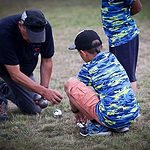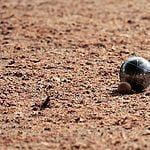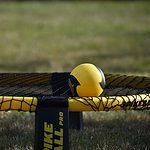If you're pondering the potential price tag of constructing an indoor badminton court, ponder no more. The cost can vary considerably based on a myriad of factors, from materials and labor to location and additional amenities.
While initial construction expenses are a vital consideration, it's equally important to factor in ongoing maintenance costs to guarantee your court remains in top condition for years to come.
Stay tuned to discover a detailed breakdown of the costs involved in bringing your indoor badminton court vision to life.
Factors Influencing Indoor Badminton Court Costs
When considering the cost of building an indoor badminton court, several key factors play an important role in determining the overall expenses. Court costs for an indoor badminton facility can vary depending on factors such as size, dimensions, and adherence to Badminton World Federation guidelines. The dimensions of the court have a notable impact on construction costs, as larger courts require more materials and labor for completion. Adhering to the federation's guidelines is vital to make sure the court meets standard specifications, adding to the overall expenses.
The choice of flooring materials is another critical aspect that affects the total cost of constructing an indoor badminton court. Whether opting for wood or synthetic flooring options, the materials chosen will have a direct impact on the budget. Additionally, expenses for net posts, sleeves, quality nets, line markings, and court layout planning must be included in the cost estimation. These elements are essential for creating a functional and professional indoor badminton court that meets the required standards.
Materials Required for Indoor Badminton Court
You'll need to focus on acquiring essential court materials for your indoor badminton court. This includes flooring options, net posts, quality nets, and proper line markings.
To optimize costs, consider cost-saving strategies such as researching different suppliers for competitive pricing and quality materials.
Remember that adhering to the Badminton World Federation guidelines is vital when selecting materials for your court. This ensures a professional and safe playing environment.
Essential Court Materials
To construct a high-quality indoor badminton court, essential materials such as flooring options, net posts, sleeves, quality nets, and precise line markings are crucial components that greatly impact the court's overall quality and maintenance requirements. Choosing the right materials not only affects the court construction costs but also influences the playing experience. Here is a breakdown of some essential court materials:
| Essential Court Materials | Description |
|---|---|
| Flooring Options | Wood or Synthetic Surfaces |
| Net Posts | Provide support for the net |
| Quality Nets | Guarantee durability and performance |
| Line Markings | Essential for court boundaries and gameplay |
Investing in high-quality materials upfront can help reduce long-term maintenance costs and ensure the indoor badminton court's longevity and safety.
Cost-Saving Strategies
Considering the importance of cost-saving strategies in constructing an indoor badminton court, selecting affordable materials like PVC flooring can greatly impact the overall budget without compromising quality or performance. To further reduce costs, you can:
- Opt for recycled rubber flooring to maintain quality while saving money.
- Explore bulk purchase options for synthetic flooring materials to cut down on expenses.
- Compare quotes from various suppliers to find the best deals on necessary materials.
- Look for alternative, budget-friendly options for line markings and court accessories to lower construction costs.
Labor Costs Breakdown for Construction
Labor costs for building an indoor badminton court typically fall within the range of $10,000 to $30,000, with skilled labor rates averaging between $25 to $75 per hour. When estimating the total cost of constructing an indoor badminton court, it's essential to take into account the breakdown of labor expenses. Skilled labor, such as carpenters, electricians, and flooring installers, play a significant role in the construction process. These professionals make sure that the court is built to the required standards and specifications.
Specialized labor, like electricians for lighting installation and flooring experts for court surfacing, may incur additional costs. The complexity of the court design and the location of the construction site can also impact labor expenses. Hiring a reputable contractor with experience in indoor sports facility construction is advisable. Their expertise can help streamline the construction process, maintain quality workmanship, and ensure compliance with regulations. By budgeting appropriately for labor costs and engaging skilled professionals, you can create a high-quality indoor badminton court that meets your requirements.
Hidden Expenses to Consider
When planning for your indoor badminton court, remember to account for additional equipment costs, maintenance fees, and potential repair expenses.
These hidden costs can impact your overall budget greatly and shouldn't be overlooked during the planning stages.
Being prepared for these financial obligations guarantees the long-term sustainability and functionality of your indoor badminton facility.
Additional Equipment Costs
Have you accounted for the hidden expenses associated with additional equipment costs when building an indoor badminton court? When considering the total cost, remember to include these essential items:
- Quality netting suspension systems
- Line markings and court layout planning
- Net posts with sleeves
- Amenities like scoreboards, bleachers, and storage facilities
These additional equipment costs can have a major impact on your budget when working with court builders. It's important to factor in these expenses to make sure your indoor badminton court is fully equipped and functional.
Maintenance and Repair Fees
Considering the long-term upkeep of your indoor badminton court, factoring in maintenance and repair fees is essential to guarantee its longevity and best functionality.
Annual maintenance costs for wooden courts typically range from $2,000 to $5,000, including expenses for refinishing at $2 to $5 per square foot.
For synthetic floors, which require regular mopping and occasional waxing, annual maintenance costs usually fall between $1,000 and $2,000.
It's vital to account for these ongoing expenses when planning your budget for the indoor badminton court. By proactively addressing maintenance needs and repairs, you can make sure that your court remains in top condition for players and spectators, optimizing its performance and extending its lifespan.
Cost-Saving Tips for Building
To save costs while building your indoor badminton court, consider utilizing modular flooring systems for their cost-effectiveness and easy installation. These systems offer a practical solution that can help you stay within your budget while still providing a high-quality playing surface.
Here are some cost-saving tips to keep in mind:
- Opt for durable materials like high-density polypropylene to reduce long-term maintenance costs.
- Explore DIY options or self-installation to save on labor expenses.
- Compare quotes from multiple suppliers to find competitive pricing for materials and services.
- Utilize energy-efficient LED lighting to reduce electricity costs over time.
Comparing Different Flooring Options
Wondering which flooring option is best for your indoor badminton court? When comparing different flooring options for your badminton court construction, you need to take into account factors such as cost of maintaining and overall construction expenses. Wooden badminton court construction usually ranges from $15 to $25 per square foot, offering a traditional look and feel. However, they require more maintenance, which can increase the long-term costs. On the other hand, synthetic badminton court flooring costs between $3 to $8 per square foot. Synthetic floors are durable, easy to clean, and have lower maintenance costs compared to wooden courts. Below is a comparison table to help you weigh the pros and cons of each flooring option:
| Flooring Type | Cost per Square Foot | Maintenance | Durability |
|---|---|---|---|
| Wooden | $15-$25 | Higher | Moderate |
| Synthetic | $3-$8 | Lower | High |
Take into consideration your budget, desired maintenance level, and the expected lifespan of the flooring when making your decision.
Lighting and Ventilation Expenses
For perfect playing conditions in an indoor badminton court, investing in quality lighting and ventilation systems is essential. When considering the lighting system, costs can range from $5,000 to $15,000, depending on the type and quality of fixtures chosen. Opting for LED lighting isn't only recommended for its energy efficiency but can also help reduce long-term electricity expenses.
As for ventilation, proper systems are highly important to maintain air quality and prevent moisture buildup. The expenses associated with ventilation will vary based on the court's size and the complexity of the system design. Remember, investing in high-quality lighting and ventilation is key to creating a comfortable and well-lit environment for players.
- Lighting costs vary between $5,000 to $15,000.
- LED lighting is recommended for energy efficiency.
- Ventilation is essential for air quality and moisture prevention.
- Expenses for ventilation depend on court size and system complexity.
Maintenance Costs Over Time
Proper maintenance is imperative to uphold the longevity and performance of an indoor badminton court. Regular maintenance guarantees that the court remains safe and functional for players. Annual maintenance costs are influenced by the type of court surface, with wooden and synthetic floors requiring different upkeep strategies.
Below is a breakdown of the annual maintenance costs for both wooden and synthetic badminton court floors:
| Maintenance Type | Cost Range |
|---|---|
| Wooden Court Refinishing | $2 to $5 per sq ft |
| Wooden Court Annual Maintenance | $2,000 to $5,000 |
| Synthetic Court Cleaning | Regular mopping |
| Synthetic Court Waxing | Occasional |
| Synthetic Court Annual Maintenance | $1,000 to $2,000 |
Wooden courts necessitate periodic refinishing, which can cost between $2 to $5 per square foot. Additionally, annual maintenance for wooden courts typically ranges from $2,000 to $5,000. On the other hand, synthetic courts require regular mopping and occasional waxing, with annual maintenance costs averaging around $1,000 to $2,000. Properly budgeting for these maintenance costs is vital to secure the longevity and quality of your indoor badminton court.
Seeking Funding and Grants
You can start seeking funding and grants for your indoor badminton court project by exploring various funding opportunities available from organizations like the Badminton World Federation (BWF), the United States Olympic Committee (USOC), local governments, and badminton clubs. Research grants and financial assistance programs specifically tailored for indoor sports facilities and badminton court construction projects to secure the necessary funds.
Utilize online databases and resources listing available grants and funding options for sports-related infrastructure development to increase your chances of receiving financial support.
Funding Opportunities Available
Exploring funding opportunities for indoor badminton court projects can lead to valuable financial support from organizations like BWF, USOC, local governments, and badminton clubs. When seeking funding, consider the following:
- Utilize grants databases to identify potential funding sources.
- Grants and financial support can help offset the costs of building and maintaining indoor badminton courts.
- Various organizations offer assistance for sports infrastructure projects, including indoor badminton courts.
- Researching and applying for grants can provide essential financial aid to cover construction and maintenance expenses for your indoor badminton court project.
Applying for Grants
When seeking financial support for your indoor badminton court project, the next step is to navigate the process of applying for grants from various organizations such as the Badminton World Federation (BWF), US Olympic Committee (USOC), local governments, and badminton clubs. By securing grants, you can offset the costs of constructing your indoor badminton court. Grant applications typically require detailed project information, budgets, and timelines to qualify for funding. Researching and applying for grants is important to make indoor badminton court construction more affordable and accessible. Utilize grant databases and available resources to identify potential funding sources for your project.
| Granting Organization | Application Requirements | Funding Amounts |
|---|---|---|
| Badminton World Federation | Detailed project plans | Varies |
| US Olympic Committee | Budget breakdown | Up to $10,000 |
| Local Governments | Timelines for completion | Varies |
Securing Financial Support
To secure financial support for your indoor badminton court project, thoroughly explore funding opportunities from organizations such as the Badminton World Federation (BWF) and local governments. When seeking funding and grants for your indoor badminton court, consider the following:
- Check for grants available through the United States Olympic Committee (USOC) and badminton clubs.
- Research potential sponsors or partnerships with businesses in the sports industry.
- Consider crowdfunding platforms or community fundraising events.
- Collaborate with other sports facilities or institutions to share costs and resources.
Total Cost Estimation Process
Estimating the total cost for constructing an indoor badminton court involves considering various factors beyond the basic construction expenses. The size of the court plays a significant role in determining the overall cost. A standard-sized court typically ranges from 17 feet by 44 feet for singles matches to 20 feet by 44 feet for doubles matches.
The Cost to Build an indoor badminton court can range from $5,000 to $8,000, depending on factors such as materials used, location, and additional amenities like LED lighting systems. It's important to budget for yearly maintenance expenses, which can range from $1,000 to $4,000, to make sure the court remains in top condition. Unforeseen maintenance costs should also be considered to avoid any financial surprises.
Daily maintenance routines are essential to uphold the functionality and longevity of the indoor badminton court, making it a worthwhile investment for players and facility owners alike.
Conclusion
As you reach the end of your indoor badminton court building journey, remember that every dollar spent is an investment in your passion for the sport.
Just like each shuttlecock symbolizes a new rally, each cost incurred symbolizes progress towards your dream court.
By carefully considering all expenses and planning ahead, you aren't just constructing a court, but creating a space where memories and victories will be made.
Keep swinging for the stars!





